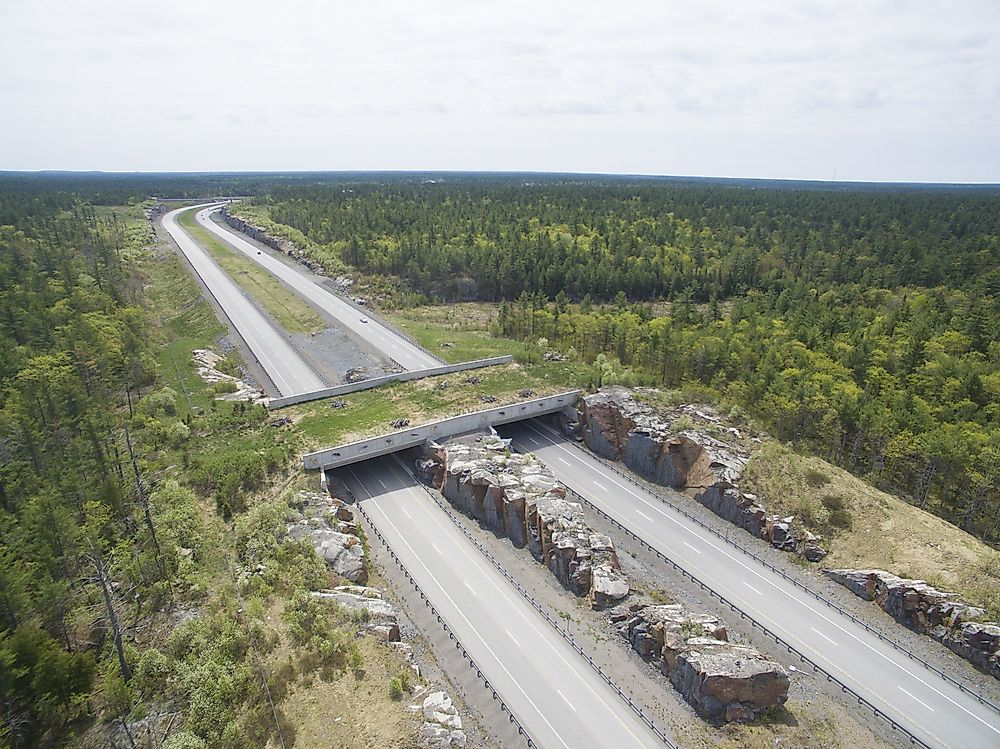What Is a Wildlife Corridor?

A wildlife corridor is an area of habitat that provides passage for wildlife across artificial obstacles such as dams, roads, and railways. It is also known as a habitat corridor or a green corridor. In addition to connecting wildlife to habitats, wildlife corridors also facilitate the migration, interbreeding, and migration of animals. The type or design of these corridors vary depending on the animal species that are intended to use them. For instance, amphibian corridors are small tunnels, while fish corridors can be made of artificial torrents. Nevertheless, the design of wildlife corridors should be random and asymmetrical. Some of the factors that should be considered during the construction of wildlife corridors include the local animal species, terrain type, topography, snow depth, human presence, vegetation cover, and physical barriers.
Types of Wildlife Corridors
There are three categories of wildlife corridors which are classified according to corridor width, continuity, and whether they are overpasses or underpasses. In terms of corridor width, there are regional, sub-regional, and local wildlife corridors. Regional corridors are greater than 500 meters wide and are mostly used as migratory pathways. On the other hand, sub-regional corridors are greater than 300 meters wide and often connect ridgelines and valley floors among, other landscape features. Local corridors are less than 50 meters in width and join patches of gullies, wetlands, and ridgelines. In terms of continuity, wildlife corridors may either be continuous or stepping stone corridors. Continuous corridors are not broken up into various parts, while stepping stone corridors are small patches of suitable wildlife habitat. The third category of wildlife corridors are underpasses and overpasses. These are bridges built to facilitate the safe movement of animals across a busy road or transportation route. Government support is required when constructing wildlife corridors because they sometimes pass through borders into neighboring countries.
Users of Wildlife Corridors
The users of wildlife corridors are divided into two groups: passage users and corridor dwellers. Passage users include large herbivores, medium to large carnivores, and migratory animal species. They usually dwell within the corridors temporarily while in transit. Passage users need the corridors during seasonal migrations and while moving between a vast home range. In contrast, corridor dwellers occupy might corridors for a few days up to several years. Such users include plants, reptiles, small mammals, and amphibians. Wildlife corridors should contain everything that the plant and animal species need for survival, such as soil for germination and burrowing spaces. Examples of artificial wildlife corridors include the MesoAmerican Biological Corridor, Eastern Himalayan Corridor, European Green Belt, China-Russia Tiger Corridor, Siju-Rewak Corridor, and the Ecologische Hoofdstructuur.
Importance of Wildlife Corridors
Wildlife corridors exist to aide in the survival of animals. They provide safe passage and refuge for animals in areas threatened by humans or predators. Additionally, some animals must travel long distances to survive, including species such as wolves, larynx, cougars, elks, and grizzly bears. Similarly, habitat corridors help in the preservation of the genetic diversity of plants and animal species. Whenever these species stay in the same habitat for extended periods of time, they become prone to inbreeding, which leads to vulnerability from certain harmful diseases and genetic disorders. Wildlife corridors also assist in resolving the challenge of habitat fragmentation.











